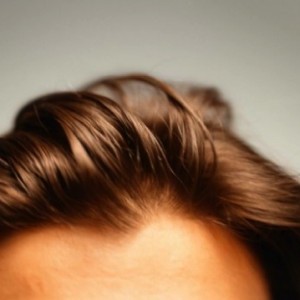
- Toupees or wigs
Toupees or wigs (as seen in the picture) are custom made, fitted hair pieces that cover up hair loss or thinning hair.1 They consist of natural or synthetic hair, attached to a customized membrane. They can be fixed to the wearer’s scalp either semi-permanently, using medical grade adhesives, or can be removable using special hairpiece tape or clips. A semi-permanent toupee can stay in place for weeks at a time, although the hair must be partially or completely shaved to ensure a good fit and periodic refitting must occur as the hair grows underneath.
- Thickening fibres
These are tiny electro-statically charged microfibers that attach themselves to the hair shaft, giving the impression of thicker, fuller hair. Because the electrostatic charge on the fibres is strong, they are virtually water resistant, but can be removed by shampooing. Attaining the right “look” by using thickening fibres may take some practice; some individuals report that applying too much product does not look natural. The fibres adhere to existing hair; therefore this product is not recommended for use by those who are completely bald or have large bald patches.
- Scalp micropigmentation
This procedure involves creating several micro-tattooed dots over the scalp to give the impression of stubble. Although the process is tedious and may need to be done in two visits, the results are often dramatic. Micropigmentation is a great option for people who have minimal hair for transplantation or cannot afford a hair transplant. This procedure can also be used to cover up a previous hair transplant scar.2 It is important to remember that tattoos fade slightly with time, so touch-ups may be required every few years.
- Masking lotion
Masking lotion can be used to tint the scalp so that it matches your individual hair colour, giving the impression of a full head of hair. Although the technology of masking lotions has improved and most lotions are waterproof, they can sometimes rub off on pillows or soft furnishings, and their masking ability can also be affected by water. As with thickening fibres, masking lotions adhere to existing hairs to give the impression of volume. As such, these lotions rely on the individual having a good amount of hair to which they can adhere.
Article by: Dr. M. Cernea, Mediprobe Research Inc.
References
- Banka N,Bunagan MJ, Dubrule Y, and Shapiro J. 2012. Wigs and hairpieces: evaluating dermatologic issues. Dermatol Ther., 25(3):260-6.
- Rassman WR, Pak JP, and Kim J. 2013. Scalp micropigmentation: a useful treatment for hair loss. Facial Plast Surg Clin North Am., 23(3): 497.503.












